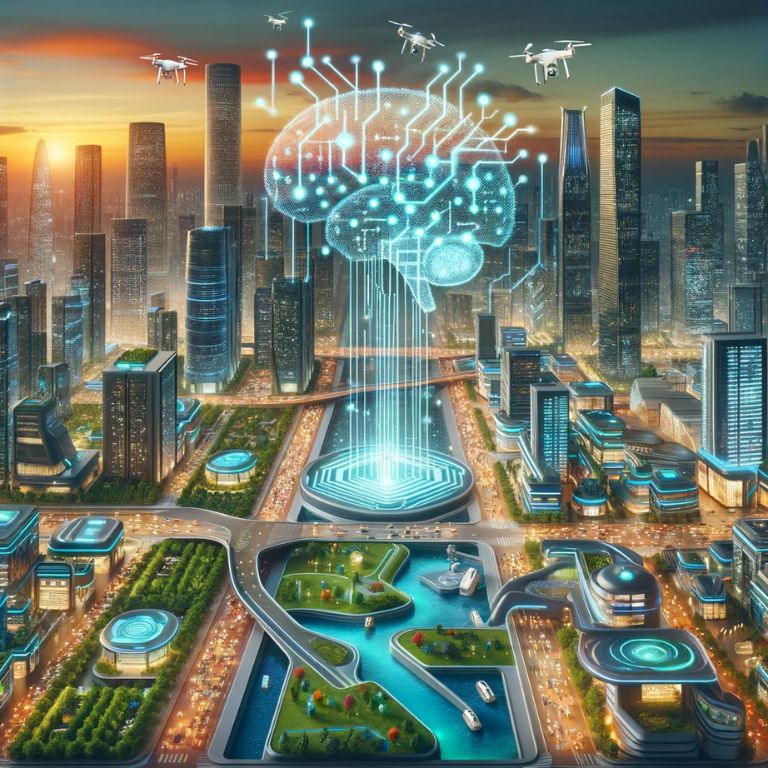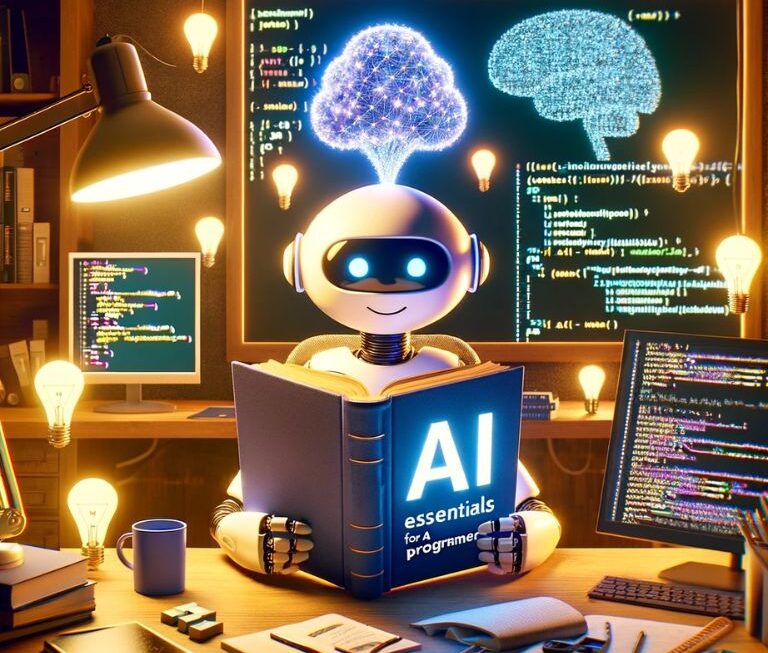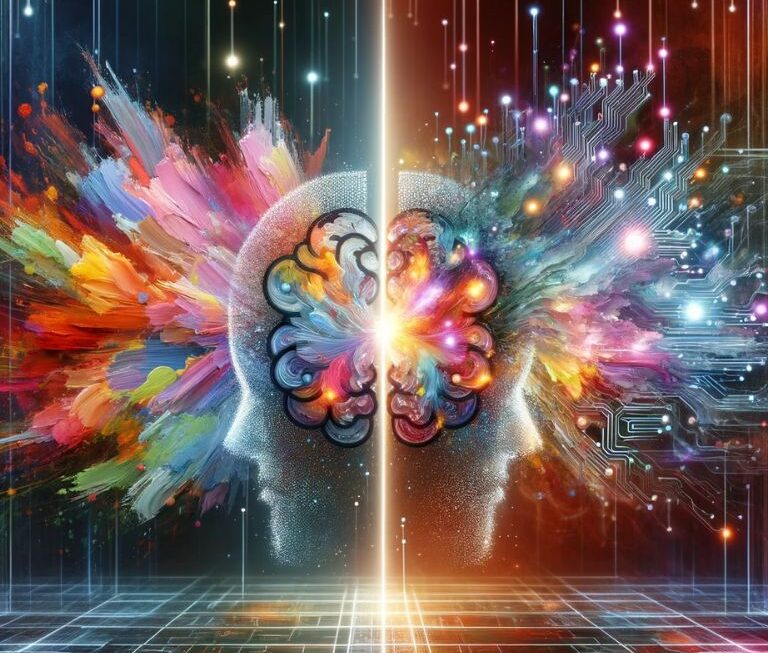In the intricate tapestry of modern urban development, Artificial Intelligence (AI) has emerged as a pivotal thread, weaving together innovation and efficiency to redefine the landscape of urban planning. The transition from traditional methodologies to AI-driven approaches marks a significant evolution in how cities are designed and managed, promising smarter, more sustainable urban environments.
The Evolution of Urban Planning: From Conventional to AI-Enhanced Techniques
Urban planning, historically reliant on manual processes and conventional wisdom, is undergoing a transformative shift. AI introduces a level of precision and predictive analysis previously unattainable. This transition is not just a leap in technology but a paradigm shift in how urban spaces are conceptualized and brought to life.
| Aspect | Traditional Urban Planning | AI-Driven Urban Planning |
| Data Analysis | Limited to manual data collection | Extensive, real-time data analysis using AI algorithms |
| Predictive Planning | Based on historical trends | Utilizes predictive modeling to anticipate future needs |
| Efficiency | Often time-consuming | Significantly faster and more efficient |
| Public Engagement | Limited public interaction | Enhanced through AI-driven platforms for citizen feedback |
| Sustainability | Considered, but hard to optimize | Integral, with AI optimizing for sustainability goals |
| Cost | Often higher due to manual labor | Reduced through automation and precise resource allocation |
This table highlights the stark contrasts between the traditional and AI-enhanced methods in urban planning. The introduction of AI allows for a level of data analysis and predictive planning that was previously unfeasible, leading to more efficient, sustainable, and cost-effective urban development strategies.
The Impetus for Change: Why AI in Urban Planning?
The need for AI in urban planning stems from several factors:
- Growing Urban Populations: With an increasing global urban population, cities face unprecedented challenges in accommodating this growth sustainably. AI offers tools to manage these challenges effectively.
- Environmental Concerns: AI’s capability to analyze complex environmental data enables cities to plan with sustainability at the forefront, reducing ecological footprints.
- Technological Advancements: The rapid advancement of technology has made AI more accessible and applicable, allowing urban planners to leverage its potential fully.
- Demand for Efficiency and Effectiveness: The urban landscapes of the 21st century require efficient use of resources and effective management of infrastructure. AI provides the tools to meet these demands.
- Enhanced Quality of Life: Ultimately, the goal of urban planning is to enhance the quality of life for its residents. AI-driven planning promises smarter, more livable cities tailored to the needs of their inhabitants.
The Role of AI in Smart City Concepts
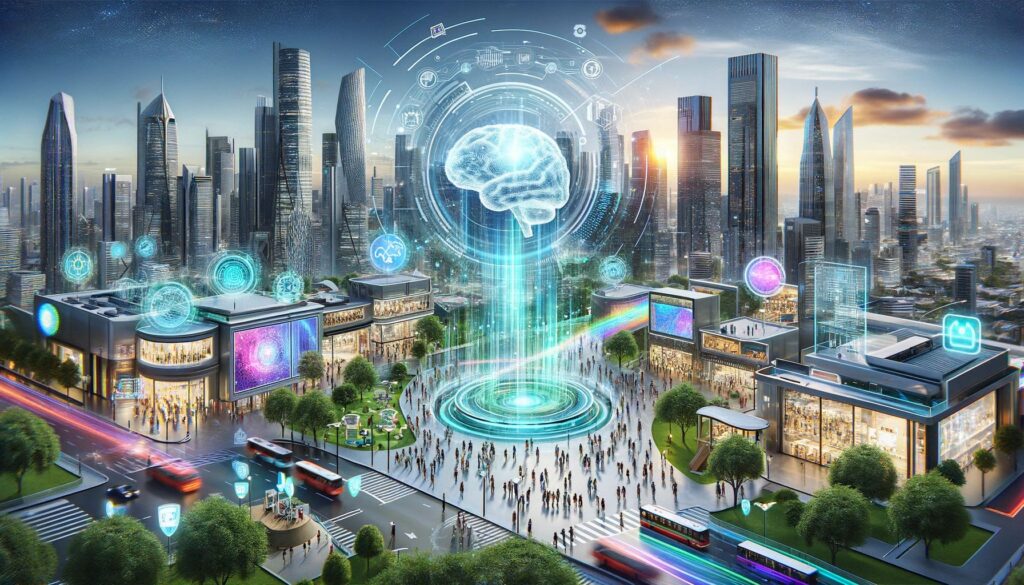
How AI Shapes the Vision of Smart Cities
Artificial Intelligence (AI) holds a central role in molding the destiny of smart cities, fueling data-driven choices for urban growth, guaranteeing efficiency and efficacy. AI empowers predictive maintenance to prevent infrastructure disruptions, facilitating uninterrupted service provision and optimizing resource utilization for sustainability. Furthermore, AI elevates public services, spanning traffic control to safety, promoting citizen participation through improved communication between city officials and residents, ultimately cultivating responsive governance and enriching urban life.
Examples of AI Applications in Current Smart City Projects
The practical applications of AI in smart cities are diverse and transformative. Some of the notable examples include:
- Traffic Flow Optimization: Cities like Singapore use AI to analyze traffic patterns, reducing congestion and improving commute times.
- Waste Management: AI-driven systems in Seoul, South Korea, have been implemented to optimize waste collection routes and frequencies, significantly reducing operational costs.
- Energy Efficiency: In cities like Amsterdam, AI is used to manage energy consumption in buildings, contributing to the city’s sustainability goals.
- Public Safety: AI-powered surveillance systems in cities such as Dubai help in crime prevention and quick emergency response.
- Urban Planning: AI tools are used to simulate urban development scenarios in Barcelona, allowing planners to visualize the impact of their decisions before implementation.
Data Analysis and AI: A Game Changer in Urban Design
Exploring the Significance of Data Analysis in Urban Planning
AI-driven data analysis is revolutionizing urban planning, offering informed decision-making based on factors like population density and traffic patterns. It enables predictive analytics for future urban needs, customizes solutions for different communities, streamlines planning for efficiency, and enhances the citizen experience with targeted services and infrastructure, making it a cornerstone of modern city design.
Illustrative Examples: Effective Adoption of AI and Data Analytics
Cities worldwide are harnessing AI and data analytics for urban planning:
- New York City: Uses AI to gauge public sentiment on development projects, fostering community-centric planning.
- Tokyo: Optimizes public transportation with AI-driven commuter data analysis, easing congestion and enhancing commutes.
- Copenhagen: Leverages data analytics and AI to track progress toward carbon neutrality by 2025, guiding eco-friendly urban design.
- Melbourne: Utilizes AI and data for its urban forest strategy, enhancing tree cover with data on health, species, and locations.
- Stockholm: Implements AI for smart traffic management, reducing commute times and emissions through data-driven traffic pattern analysis.
AI-Driven Solutions to Urban Challenges
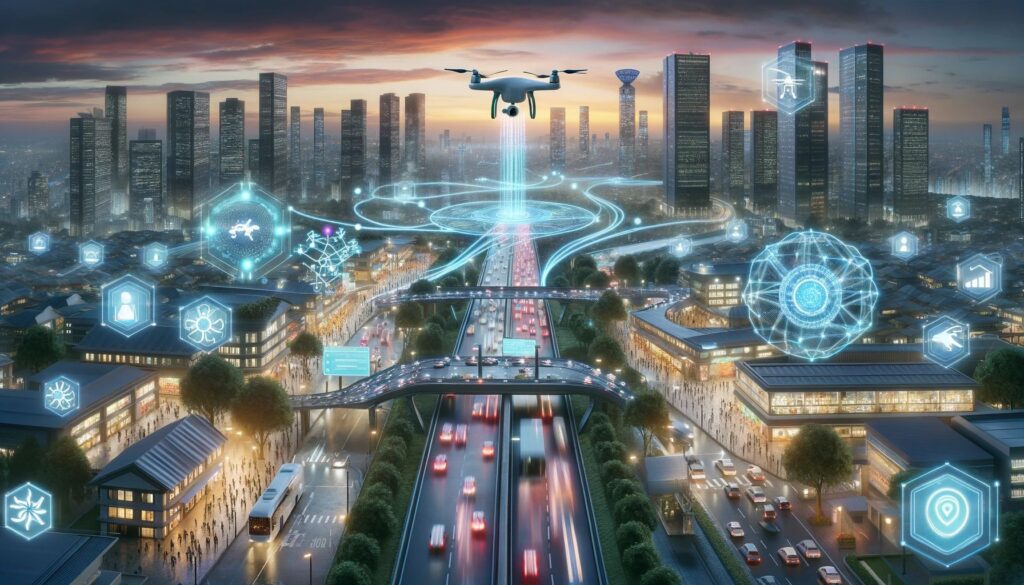
Addressing Urbanization Issues with AI
As urban centers continue to grow, they face a myriad of challenges, from overcrowding to resource management. AI offers innovative solutions to these urbanization issues, enabling cities to evolve into more livable and sustainable spaces. AI’s role in urban problem-solving includes:
- Housing and Spatial Allocation: AI algorithms can assist in optimizing land use, ensuring that housing and public spaces are developed in harmony with the city’s needs and environmental constraints.
- Infrastructure Management: AI aids in the maintenance and upgrade of urban infrastructure, from roads to public utilities, ensuring they meet the growing demands of the population.
- Environmental Monitoring: With AI, cities can better monitor and manage environmental factors, like air quality and noise pollution, improving the overall urban environment.
AI in Managing Transportation, Waste, and Energy Efficiency
AI’s impact on urban living is evident in transportation, waste management, and energy efficiency. It optimizes traffic flow, reduces congestion, and improves public transit scheduling. In waste management, AI streamlines collection routes and enhances recycling rates. Furthermore, it manages smart grids and optimizes building energy use, curbing consumption and costs in cities. These AI applications hold immense potential for urban improvement.
The Impact of AI on Sustainability and Environment
AI’s Role in Promoting Sustainable Urban Development
Artificial Intelligence (AI) is a key player in the pursuit of sustainable urban development, providing innovative solutions that balance growth with environmental responsibility. The role of AI in this context is multifaceted:
- Resource Optimization: AI helps in the efficient use of resources like water and energy, reducing waste and promoting conservation.
- Sustainable Transportation: AI-powered solutions in transportation, such as smart traffic management and electric vehicle integration, contribute to reducing carbon emissions.
- Green Infrastructure Planning: AI assists in designing green spaces and eco-friendly buildings, enhancing urban biodiversity and environmental quality.
- Climate Change Mitigation: By processing large sets of environmental data, AI aids in predicting and mitigating the impacts of climate change on urban areas.
Reducing Environmental Footprint through AI Technologies
The deployment of AI technologies is instrumental in minimizing the environmental footprint of urban areas:
- Energy Consumption: AI systems in smart buildings and grids can significantly lower energy consumption, leading to a reduction in greenhouse gas emissions.
- Waste Reduction: AI-driven waste sorting and management systems enhance recycling efforts and minimize landfill use, contributing to a cleaner environment.
- Water Management: AI in water management enables cities to detect leaks, predict usage patterns, and ensure sustainable water usage.
- Pollution Control: AI helps monitor and analyze pollution levels, enabling timely interventions to maintain air and water quality.
- Urban Farming: AI technologies are being used in urban farming initiatives to optimize crop yields and reduce the need for transport, further contributing to sustainability.
Public Participation and AI in Urban Planning
Enhancing Citizen Engagement with AI Tools
AI is transforming urban planning by enhancing citizen engagement. AI-powered platforms enable easy feedback, making public consultations more accessible. Social media analysis offers insight into community sentiment. VR simulations allow residents to visualize changes and provide informed feedback. Real-time data collection and analysis gauge public reactions to projects and policies, ensuring urban spaces align with inhabitants’ needs and desires.
Examples: Utilizing AI for Collecting Public Feedback
Several cities worldwide have effectively used AI to gather and incorporate public input into their urban planning processes:
- Boston’s CityScore Initiative: Boston utilizes an AI-powered platform called CityScore, which aggregates data from various city services to gauge performance. Residents can interact with this platform, providing feedback that influences decision-making.
- Amsterdam’s Citizen Engagement Projects: Amsterdam employs AI tools to analyze social media and online forums, gathering public opinions on urban development issues. This approach has led to more community-focused urban projects.
- Singapore’s Virtual Singapore Project: Singapore’s 3D virtual platform, powered by AI, allows citizens to simulate and visualize urban projects. This has enabled more effective public participation in the planning process.
- Barcelona’s Sentilo Platform: Barcelona uses the Sentilo platform, equipped with AI, to collect and analyze data from sensors across the city. This data helps in understanding how citizens use city services and infrastructure, influencing planning decisions.
Emerging Patterns and Obstacles in AI-Powered Urban Planning
Anticipating Urban Landscape Transformations Using AI
As we look towards the future, AI’s role in urban planning is poised to grow exponentially, fundamentally altering the fabric of urban landscapes. Predictive capabilities of AI will enable city planners to envision and prepare for future scenarios with greater accuracy and creativity. Key trends in this evolution include:
- Advanced Predictive Modeling: AI will increasingly be used to simulate a wide range of urban development scenarios, helping planners to foresee and mitigate potential issues before they arise.
- Integration of IoT and AI: The Internet of Things (IoT) and AI are set to converge more deeply, leading to smarter cities where real-time data collection and analysis are seamlessly integrated into everyday urban life.
- Autonomous Public Transport: The future may see a rise in AI-driven autonomous public transport systems, revolutionizing urban mobility.
- Responsive Cityscapes: Cities will become more responsive and adaptive, with AI systems continuously analyzing data to adjust urban services and infrastructure to changing needs.
Ethical Considerations and Challenges in AI Implementation
In the realm of AI-driven urban planning, while the advantages are significant, ethical considerations loom large. Privacy concerns arise due to the handling of vast amounts of personal data, necessitating robust security measures. Bias mitigation is crucial to prevent unfair or discriminatory outcomes, emphasizing careful AI algorithm design. Furthermore, transparency in AI decision-making, mechanisms for accountability, addressing the digital divide, particularly in less developed areas, and the establishment of comprehensive regulatory frameworks are all essential components to effectively address these ethical challenges and ensure the responsible implementation of AI in urban planning.
Conclusion: Envisioning the Future of Urban Spaces with AI
As we enter the AI-driven urban planning era, it becomes evident that AI is more than just an efficiency tool—it’s a transformative catalyst. AI’s data analysis, trend prediction, and citizen engagement capabilities lay the foundation for smarter, sustainable cities. However, we must address challenges to ensure equitable access to these benefits. This ongoing journey demands a balance between technological excitement, ethics, and inclusivity. AI promises efficient, environmentally conscious, and socially attuned urban landscapes if embraced responsibly.

